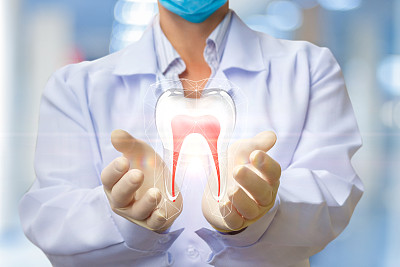The Comprehensive Guide to Understanding Dental Implants Benefits Procedures and Aftercare for a Healthier Smile
Summary: Dental implants have revolutionized restorative dentistry, providing a permanent solution for tooth loss. This comprehensive guide will explore the numerous benefits of dental implants, including their durability, aesthetic appearance, and improved oral health. We will also delve into the procedural steps involved in receiving dental implants, shedding light on what patients can expect during the process. Finally, understanding aftercare is essential for ensuring the longevity of implants, and we will offer important tips on maintaining oral hygiene post-surgery. By the end of this guide, readers will gain a thorough understanding of dental implants and how they can contribute to a healthier smile.
1. Advantages of Dental Implants

Dental implants offer several advantages over traditional tooth replacement options like dentures and bridges. One significant benefit is their durability. Dental implants are made from titanium, a material that integrates seamlessly with the jawbone, providing a strong foundation that can last for many years—often a lifetime—with proper care.
Another major advantage is the aesthetic appeal of dental implants. They are designed to look, feel, and function like natural teeth, which enhances an individual’s smile and boosts their confidence. With dental implants, you can enjoy your favorite foods without the worry of discomfort often associated with removable dentures.
In addition, dental implants contribute to improved oral health. Unlike bridges, which require the alteration of neighboring teeth, implants preserve the structure of surrounding teeth. They also stimulate the jawbone, preventing the bone loss that typically occurs after losing a tooth. This preservation is crucial for facial structure, as it helps avoid the sunken appearance that can happen as a result of bone loss.
2. The Dental Implant Procedures Explained
The dental implant process begins with a thorough assessment by a dental professional to determine if a patient is a suitable candidate. This may involve X-rays, a review of dental and medical history, and a discussion of the patient’s expectations. Understanding the entire process at this stage can help alleviate any anxieties the patient may have.
Once cleared for the procedure, the first step involves placing the titanium implant into the jawbone. This is typically done under local anesthesia, allowing patients to remain comfortable during the procedure. After the implant is inserted, a healing period of several months is necessary for osseointegration, where the implant fuses with the jawbone.
Following this integration period, a crown is placed on the implant. The crown is custom-made to match the patient’s natural teeth, ensuring a seamless blend. This entire process, while detailed and requiring patience, results in a functional and aesthetic solution to tooth loss.
3. Aftercare for Long-Lasting Implants
Aftercare following the dental implant procedure is crucial for ensuring the longevity of the implants. Patients are advised to maintain excellent oral hygiene practices. This includes brushing and flossing regularly to prevent plaque buildup, which can lead to gum disease and affect the integrity of the implant.
Moreover, routine dental check-ups are vital for monitoring the health of the gum tissue and the surrounding teeth. Regular visits can help identify any potential problems early, ensuring they can be addressed promptly.
Patients should also be mindful of their dietary choices. While implants are sturdy, its essential to avoid excessively hard foods in the immediate aftermath of surgery. A balanced diet can promote healing and ensure that the surrounding tissues remain healthy.
4. Overcoming Challenges and Misconceptions
Despite the numerous benefits, there are common misconceptions about dental implants that can deter individuals from seeking treatment. One such misconception is that the procedure is overly painful. In reality, with the advancements in anesthesia and sedation techniques, most patients report only mild discomfort.
Another challenge many face is the cost associated with dental implants. While the upfront investment can be significant, its important to consider the long-term savings. Dental implants eliminate the need for future replacements that traditional dentures or bridges may require, making them a cost-effective option in the long run.
Lastly, potential candidates may worry about their qualifications for dental implants. Factors such as age, health conditions, and smoking can affect suitability, but with a thorough assessment from a qualified dental professional, many people can still receive implants.
Summary:
This article provides a comprehensive overview of dental implants, covering their benefits, procedural steps, and necessary aftercare. The insights shared aim to demystify the process and promote informed decision-making regarding tooth replacement options. With an understanding of the advantages and challenges, individuals can make empowered choices towards achieving a healthier smile.
This article is compiled by Vickong Dental and the content is for reference only.


